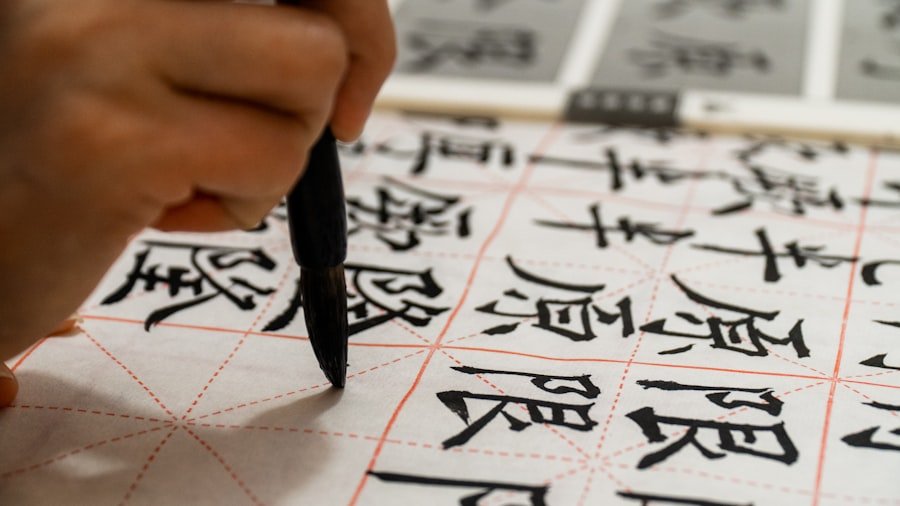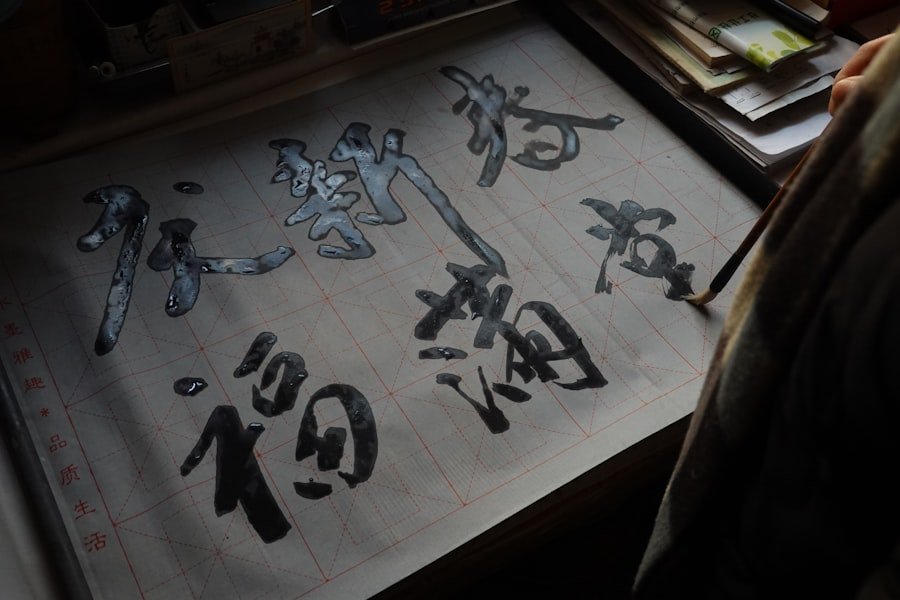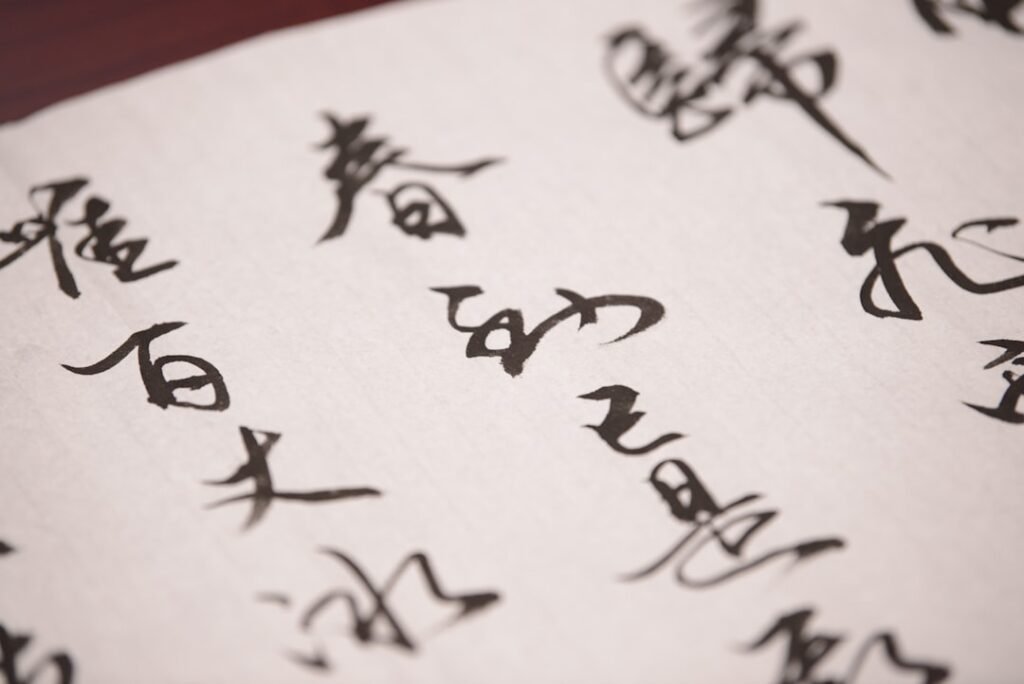Chinese calligraphy, an ancient art form, is not merely a means of communication but a profound expression of culture and philosophy. It embodies the essence of Chinese aesthetics, where each stroke of the brush conveys emotion and intention. The practice of calligraphy has been revered for centuries, with its roots tracing back to the Shang Dynasty, where inscriptions on oracle bones marked the beginning of written Chinese language.
Over time, it has evolved into a sophisticated art form that reflects the character and spirit of the artist. The beauty of Chinese calligraphy lies in its fluidity and rhythm, which can evoke a sense of tranquillity or dynamism depending on the style and execution. Each character is a work of art, meticulously crafted with attention to detail and an understanding of the balance between form and space.
As we delve deeper into this enchanting world, we will explore not only the traditional aspects of calligraphy but also its modern adaptations, particularly on fabric, which opens up new avenues for creativity and expression. Master the art of Chinese calligraphy. Enroll now at the LC Chinese School in Oslo.
Table of Contents
ToggleSummary
- Chinese calligraphy is a traditional art form that has been practiced for centuries, with a rich cultural significance.
- Traditional tools and techniques for Chinese calligraphy include the use of brushes, ink, and paper, with a focus on precision and fluidity of movement.
- Exploring new mediums for Chinese calligraphy, such as fabric, allows for innovative and contemporary expressions of this ancient art form.
- Transferring calligraphy onto fabric requires special techniques and considerations, presenting both challenges and opportunities for artists.
- The cultural significance of calligraphy on fabric lies in its ability to merge tradition with modernity, offering new avenues for artistic expression and application.
Traditional Tools and Techniques
To truly appreciate the art of Chinese calligraphy, one must first understand the traditional tools and techniques that have been used for centuries. The primary tools include the brush, ink, inkstone, and rice paper. The brush, often made from animal hair, is the most crucial instrument, allowing for a range of strokes from delicate to bold.
The choice of brush can significantly influence the outcome of the artwork, as different brushes yield different textures and effects. Ink is another vital component, traditionally made from soot mixed with water. The process of grinding ink on an inkstone is an art in itself, requiring patience and skill to achieve the perfect consistency.
Rice paper, known for its absorbency and texture, serves as the canvas for calligraphers. The techniques employed in calligraphy are diverse, ranging from the fluid movements of cursive script to the precision of regular script. Mastery of these techniques requires years of practice and dedication, as each stroke must be executed with intention and grace.
Exploring New Mediums for Chinese Calligraphy

In recent years, there has been a growing interest in exploring new mediums for Chinese calligraphy beyond traditional paper. Artists are increasingly experimenting with various surfaces such as wood, ceramics, and even digital platforms. This exploration not only breathes new life into the ancient art form but also allows for greater creativity and innovation.
By stepping outside the confines of traditional materials, calligraphers can reach wider audiences and engage with contemporary art movements. The use of fabric as a medium for calligraphy has gained particular attention. Fabric offers a unique texture and flexibility that can enhance the visual impact of calligraphic works.
Artists can create stunning pieces that combine traditional techniques with modern aesthetics, resulting in a fusion that appeals to both purists and contemporary art enthusiasts alike. This shift towards new mediums reflects a broader trend in the art world, where boundaries are continually being pushed to redefine what constitutes art.
The Art of Transferring Calligraphy onto Fabric
Transferring calligraphy onto fabric presents both challenges and opportunities for artists. The process typically involves several steps, including selecting the right fabric, preparing it for ink application, and choosing appropriate techniques for transfer. Artists often opt for natural fabrics like silk or cotton due to their ability to absorb ink well and showcase vibrant colours.
One popular method for transferring calligraphy onto fabric is through screen printing, which allows for precise replication of intricate designs. Alternatively, artists may choose to hand-paint their calligraphy directly onto the fabric using special fabric inks or dyes. This method requires a steady hand and a deep understanding of brush techniques to ensure that the final piece retains the elegance and fluidity characteristic of traditional calligraphy.
Regardless of the method chosen, the goal remains the same: to create a harmonious blend of text and texture that captivates viewers.
Challenges and Opportunities in Calligraphy on Fabric
While transferring calligraphy onto fabric opens up exciting possibilities, it also presents unique challenges that artists must navigate. One significant challenge is ensuring that the ink adheres properly to the fabric without bleeding or fading over time. This requires careful selection of materials and thorough testing to achieve optimal results.
Additionally, artists must consider how different fabrics react to various inks and dyes, as this can significantly impact the final appearance of their work. Despite these challenges, there are numerous opportunities for innovation within this medium. The versatility of fabric allows artists to create wearable art pieces such as scarves or garments adorned with their calligraphic designs.
This not only expands the reach of their work but also invites viewers to engage with calligraphy in a more personal and intimate way. Furthermore, collaborations with fashion designers or textile manufacturers can lead to exciting new projects that elevate Chinese calligraphy into contemporary fashion.
Innovations in Calligraphy on New Mediums

As artists continue to experiment with new mediums for Chinese calligraphy, innovations are emerging that push the boundaries of traditional practices. One notable trend is the integration of technology into calligraphic art. Digital tools allow artists to create intricate designs that can be easily transferred onto various surfaces, including fabric.
This fusion of traditional techniques with modern technology opens up endless possibilities for creativity. Moreover, artists are exploring mixed media approaches that combine calligraphy with other art forms such as painting or photography. By layering different elements, they create dynamic compositions that challenge conventional perceptions of calligraphy as a standalone art form.
These innovations not only breathe new life into Chinese calligraphy but also encourage dialogue between different artistic disciplines, fostering a sense of collaboration and experimentation within the art community.
The Cultural Significance of Calligraphy on Fabric
The cultural significance of Chinese calligraphy extends beyond its aesthetic appeal; it is deeply intertwined with history, philosophy, and identity. When transferred onto fabric, calligraphy takes on new dimensions that resonate with contemporary audiences while honouring its rich heritage. Each piece serves as a bridge between past and present, allowing viewers to connect with the cultural narratives embedded within the characters.
Fabric adorned with calligraphic designs can also serve as a medium for storytelling, conveying messages or themes that reflect personal or collective experiences. This aspect is particularly relevant in today’s globalised world, where cultural exchange is more prevalent than ever. By showcasing Chinese calligraphy on fabric, artists contribute to a broader dialogue about identity and heritage while celebrating the beauty of diversity in artistic expression.
Contemporary Applications of Calligraphy on Fabric
The contemporary applications of Chinese calligraphy on fabric are vast and varied. From fashion to home décor, artists are finding innovative ways to incorporate this ancient art form into everyday life. Fashion designers are increasingly embracing calligraphic elements in their collections, creating garments that feature bold characters or delicate scripts that tell a story or convey a message.
In home décor, calligraphic textiles such as cushions or wall hangings add an artistic touch to interior spaces while serving as conversation starters. These pieces not only beautify living environments but also invite viewers to engage with the cultural significance behind the characters displayed. As more artists explore these applications, Chinese calligraphy continues to evolve and adapt to contemporary tastes while remaining rooted in tradition.
Tips for Beginners in Calligraphy on Fabric
For those interested in embarking on their journey into calligraphy on fabric, there are several tips that can help beginners navigate this rewarding yet challenging art form. Firstly, it is essential to familiarise oneself with traditional brush techniques before attempting to transfer designs onto fabric. Practising on paper will build confidence and skill before moving on to more complex surfaces.
Secondly, selecting high-quality materials is crucial for achieving desired results. Investing in good brushes, inks specifically designed for fabric use, and suitable fabrics will significantly impact the final outcome of your work. Additionally, experimenting with different techniques such as screen printing or hand-painting will allow beginners to discover their unique style and preferences.
Showcasing Chinese Calligraphy on Fabric
Showcasing Chinese calligraphy on fabric offers artists an opportunity to share their work with a broader audience while celebrating cultural heritage. Exhibitions featuring textile art can attract diverse viewers who may not have previously engaged with traditional calligraphy forms. By presenting these pieces in galleries or public spaces, artists can foster appreciation for this ancient art form in contemporary contexts.
Furthermore, online platforms provide an avenue for artists to reach global audiences through social media or e-commerce sites dedicated to handmade goods. By sharing their creative process and finished works online, artists can connect with enthusiasts worldwide who share an interest in both calligraphy and textile arts.
The Future of Chinese Calligraphy on New Mediums
As we look towards the future of Chinese calligraphy on new mediums such as fabric, it is clear that this ancient art form continues to thrive and evolve. The exploration of innovative techniques and materials not only breathes new life into traditional practices but also invites fresh perspectives from contemporary artists. With each stroke on fabric, they weave together history and modernity, creating pieces that resonate with audiences across cultures.
At LC Chinese School in Oslo, we recognise the importance of nurturing this artistic heritage through our dedicated Chinese calligraphy courses. These classes provide students with an opportunity to learn traditional techniques while encouraging them to experiment with new mediums like fabric. By fostering creativity and appreciation for this timeless art form, we aim to inspire a new generation of artists who will carry forward the legacy of Chinese calligraphy into exciting new realms.
Master the art of Chinese calligraphy. Enroll now at the LC Chinese School in Oslo.







